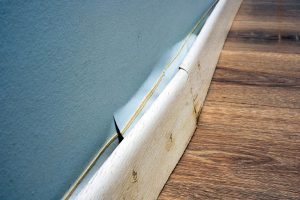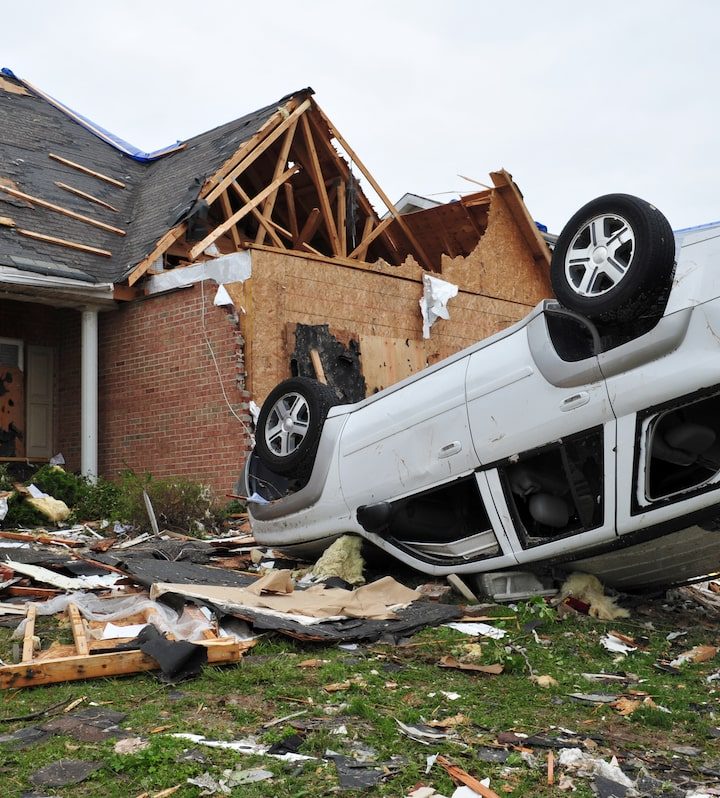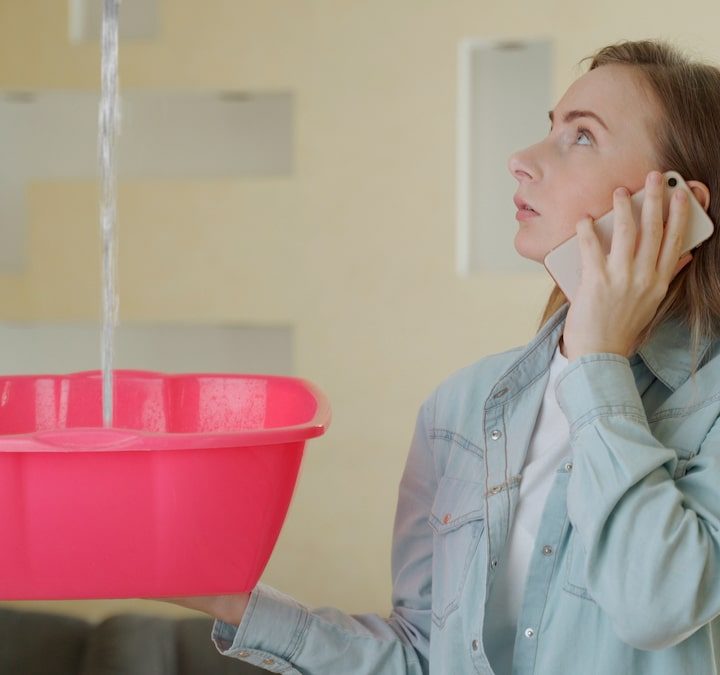Water Damage: The Hidden Threat To Your Baseboards

Assessing And Repairing The Devastation: Coping With Tornado Damage
April 28, 2023Water damage is a common household issue that often goes unnoticed until it’s too late, especially when it comes to your baseboards. Protecting your home from the hidden threat of water damage on baseboards is essential in maintaining the structural integrity and overall aesthetics of your living space.
Baseboards are not only susceptible to water damage from leaks, but they also bear the brunt of any moisture that seeps through walls, floors, or plumbing systems. The consequence of untreated water damage can lead to severe discoloration, staining, warping, and even complete disintegration of the baseboard material. Regarding the impact of moisture on fiberboard materials, early detection and repair of water-damaged baseboards can prevent costly restoration services down the road.
Stay with us as we explore the signs of water damage and what homeowners can do to save their baseboards and walls from this insidious threat.
Causes Of Water Damage On Baseboards
Understanding the causes of water damage to baseboards can mitigate the need for costly repairs and restoration services. As homeowners, your baseboards encounter numerous threats daily. Plumbing leaks can lead to water damage behind the walls, causing your baseboards to absorb moisture, leading to discoloration and potential warping.
Poorly sealed windows and doors present an alleyway for rain or humidity to seep in, staining and peeling your baseboards. Damaged roofs and gutters can also channel water down your walls to the floor, intensifying the risk of water-damaged baseboards.
Also, your house’s high humidity and condensation can degrade your drywall, leading straight to your baseboards. Accidents, spills, or unchecked leaks can cause an instant malady, compromising the integrity of even new baseboards.
What if your baseboards have already been damaged? Rest assured, Link Public Adjusters, are there for you. We offer expert insurance claim consulting and adjustment services to communities all across the state of Florida and are committed to aiding homeowners in accurately determining property loss, including pesky water-damaged baseboards, ensuring rightful compensation for bearing such damages.
Signs Of Water Damage On Baseboards

Detecting the signs of water damage on baseboards early can help save your home from escalating restoration costs, and most importantly, structural damage. The very nature of baseboards in your home puts them at the frontline of moisture exposure. But oftentimes, these signs of baseboard water damage are not always easy to spot.
Foremost, swelling or buckling are key indicators that your baseboards may have water damage. Another noticeable sign is discoloration or staining. This could manifest as dark water stains or paint discoloration on the baseboards. A musty odor is also a tell-tale sign of water damage and possible mold growth behind the walls.
If your wallpaper or paint is peeling near the floor, the odds are that the baseboard and maybe even the wall behind is damaged. Lastly, any sight of mold or mildew around your baseboards isn’t just a health risk, but also an indicator of excess water behind the baseboard.
Link Public Adjusters offer professional help to their clients. We help to review their current insurance policies and assist when disaster strikes to provide relief and understanding when they need it most. With water damage, our team offers restoration services that can expertly assess the damage and provide the best repair process for water damaged baseboards.
Our public adjusters and consultants offer an extensive contact network that they bring in to help cultivate and implement unique solutions for your needs. By performing these services on a case-by-case basis to ensure customized, professional, comprehensive claim analysis and adjustment for all their clients. We will check if your baseboards are salvageable, or if it’s best to repair or replace the damaged sections.
How To Prevent Water Damage On Baseboards
To prevent water damage on baseboards, constant vigilance, and diligent maintenance are key.
Primarily, regular inspection and maintenance of your plumbing systems are essential to avert leaks, which can result in water damage behind the walls and, ultimately, the baseboards. Take note of any discrepancy in water pressure or inexplicable spikes in your water bill.
Secondly, to prevent water from seeping through, ensure windows and doors are properly sealed. A seemingly small trickle can saturate your baseboard over time, causing water damage on baseboards.
Your roof and gutters also play a vital role. By keeping them clean and promptly repairing any damages, water can be redirected away, preventing any leaks from staining or causing a warp in your baseboards.
Guarding your home against high humidity levels also shields your baseboards. Consider deploying a dehumidifier during steamy summer months to keep indoor moisture in check.
Finally, be mindful of your water use and handling. A hasty mop-up after a spill might leave behind moisture that could cause water damage on the baseboards.
Armed with these preventative pointers, the homeowner can significantly reduce the risk new baseboards face of becoming water-damaged baseboards. Vigilance and maintenance could save you the hassle of complex repairs, or the cost of a water damage restoration service.
How To Repair A Water Damage Baseboard
Repairing a baseboard impacted by water damage isn’t just about aesthetics, it’s about safeguarding your home.
First, it’s crucial to assess the damage. What’s visible might be the tip of the iceberg. Look for signs of discoloration, swelling, or buckling, a sure sign of baseboard water damage. If there’s a musty smell, chances are you’re dealing with mold growth.
Next, remove the damaged baseboard sections. A pry bar can help with this. And although it may feel like a demolition, it’s a vital step to ensuring the water leak causing trouble is found and fixed.

Before replacing or repairing anything, make sure to clean and disinfect the area fully. Damp cloth and disinfectant should do, but allow it to dry completely before proceeding to prevent further moisture damage.
To prevent future damage, consider what may have caused the water problem in your home to begin with. Is it a leaky pipe behind the walls? Or excess water from a faulty appliance? Acting now can save you from a recurrence in the future, as leaving it unattended can cause structural damage.
Finally, once you’re sure everything’s dry and there are no other signals of water damage, you can start to repair or replace the damaged baseboard using a finish nail. You can opt to paint the baseboards for that final touch, but remember to prime your wood baseboards first to help resist future moisture.
This may sound like a lot to take on, and indeed it can be, particularly if the damage to the baseboards is severe. If this is the case, don’t hesitate to call in an expert.
Link Public Adjusting Group is a skilled, experienced team at recognizing the wide variety of property damage that can take place on a Florida residential or commercial property.
With years of assisting clients with their insurance claims, their team has seen a wide variety of water damage, fire damage, roof leaks, tornado damage, and other disaster situations commonly seen in Florida like hurricanes and tropical storms as well. They have enough experience to help you and your property recover from unforeseen circumstances including a water damaged baseboard. They will work with you by offering a public adjusting and consulting team to help you get things back to normal as fast as possible the right way.
Keeping Your Home Safe From The Hidden Threat Of Baseboard Water Damage
It might be easy to overlook, but baseboard water damage isn’t a problem to ignore. Tackling it, however, isn’t just about restoring the aesthetic appeal of your home. More importantly, it’s about protecting its structural integrity, safeguarding it from the hidden threats that water damage might harbor behind your walls.
Priority number one, of course, is prevention. After all, a small water leak today can be the cause of water damage tomorrow. Regular maintenance and inspection of the places most at risk – the baseboards in your home, pipes, windows, doors, and the roof – can help nip many potential problems in the bud.
However, if you do notice signs of water damage such as discoloration, peeling paint, or a musty smell, don’t delay in repairing it. Time can intensify the damage, rendering the baseboards unsalvageable, escalating the cost for repair, and increasing the potential for mold growth.
Repairing damaged baseboards might seem daunting, but you needn’t do it alone. If you’re unsure about the severity of the baseboard damage or where to start, don’t hesitate to call in a professional. Restoration experts affiliated with companies like Link Public Adjusters specialize in dealing with water damage and can guide you through the repair process.
Addressing water damage on your baseboards isn’t just a minor home improvement task, it’s an investment in your home’s safety. It mitigates the chances of facing more severe structural damage down the line and helps ensure that your home remains the safe and secure haven it should always be. Taking action now can save you not just money, but also peace of mind.




